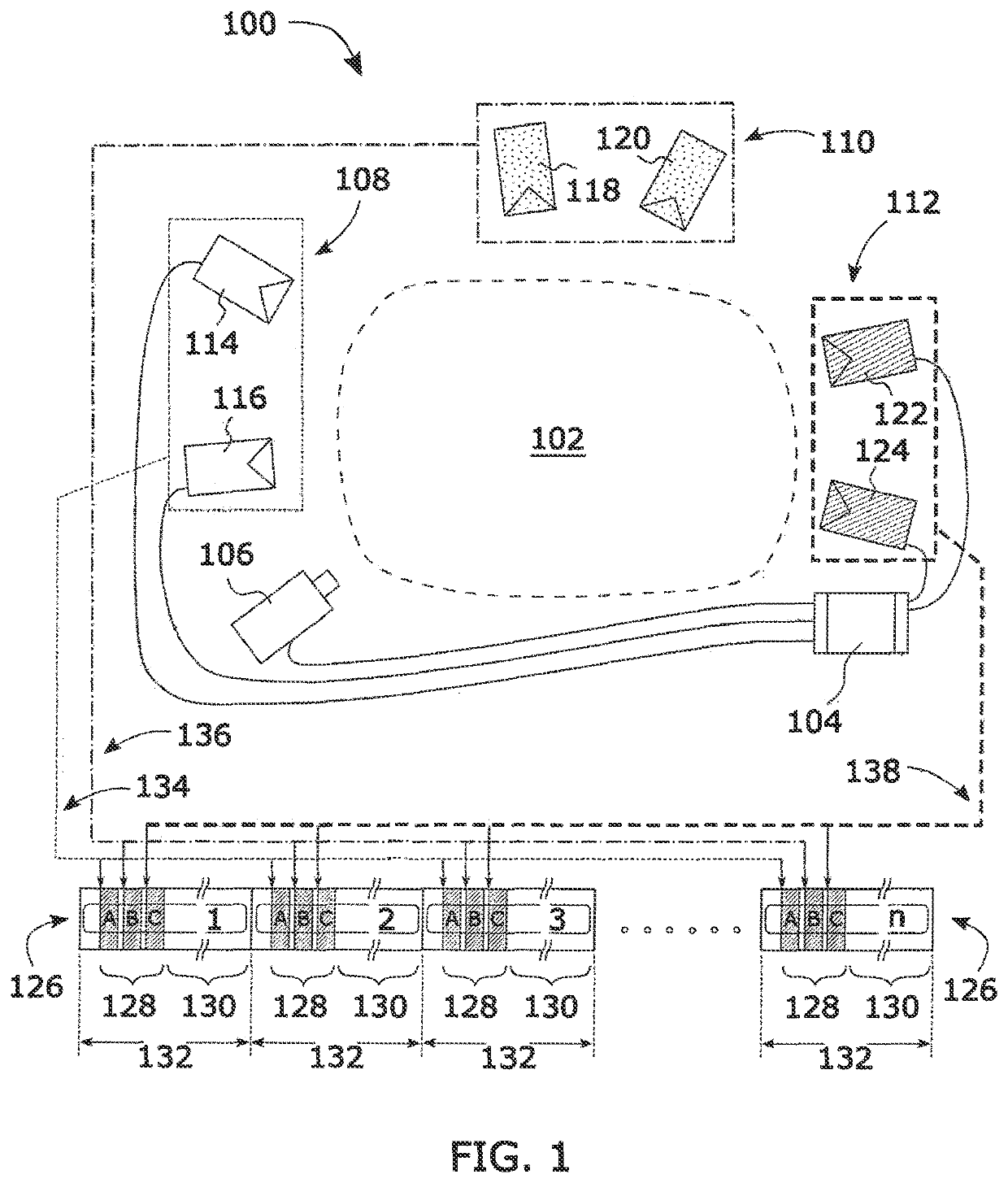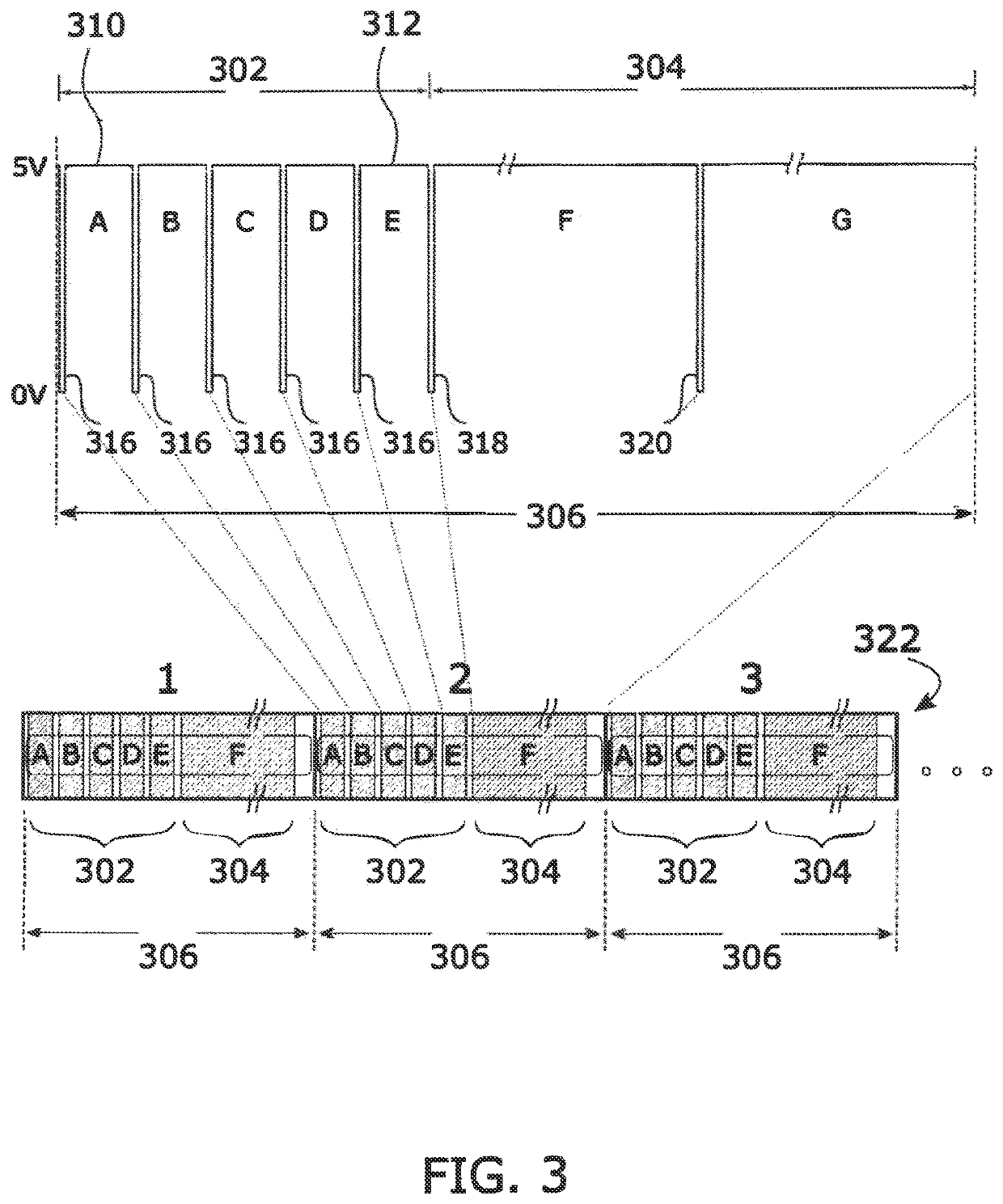Apparatus and method for recording a scene for a plurality of lighting setups using only a portion of each cinematic frame
a technology of lighting setup and camera, applied in the field of illumination and recording scenes can solve the problems of inability to film a motion picture scene using multiple lighting setups, motion artifacts, and often occurring motion artifacts, and achieve the effects of minimal image data storage requirements, minimal motion offset, and efficient recording a scen
- Summary
- Abstract
- Description
- Claims
- Application Information
AI Technical Summary
Benefits of technology
Problems solved by technology
Method used
Image
Examples
embodiment 100
[0075]With reference to FIG. 1, a schematic diagram is presented of an apparatus 100 for illuminating and recording a scene 102 using three lighting setups 108, 110, 112. In this embodiment 100, each lighting setup 108, 110, 112 has two light sources that are capable of providing strobed light. The apparatus 100 includes a controller 104 in communication with a camera 106 configured to record the scene 102.
[0076]The controller 104 is also in communication with lighting equipment consisting of: a light source 114, a light source 116, a light source 118, a light source 120, a light source 122, and a light source 124. The light sources are grouped into three lighting setups: a first lighting setup 108 consisting of light source 114 and light source 116, a second lighting setup 110 consisting of light source 118 and light source 120, and a third lighting setup 112 consisting of light source 122 and light source 124.
[0077]Each light source that is capable of providing strobed light can b...
case 1
[0122]
[0123]Duration of micro frames 302+Duration of F=(Macro Frame Duration 306) / 2
[0124]Duration of G=(Macro Frame Duration 306) / 2
case 2
[0125]
[0126]Duration of micro frames 302+Duration of G=(Macro Frame Duration 306) / 2
[0127]Duration of F=(Macro Frame Duration 306) / 2
[0128]One possible case with a single long frame F only, for example:
[0129]Duration of micro frames 302+Duration of F=Macro Frame Duration 306
[0130]Thus, there can be a long frame F wherein ambient continuous light is captured, and there can be a long frame G wherein ambient continuous light is captured. It is also possible that there are no long frames F or G, and the camera does not record light during 304, only during 302. It is also possible for ambient continuous light to be captured during a long frame F, and there would be no long frame G.
[0131]This embodiment includes five micro frame low trigger signals A, B, C, D, E 316 that the camera 106 sends to the controller 104 (shown in FIG. 1) at the beginning of each micro frame A, B, C, D, and E. In this embodiment, these five micro frame low trigger signals A, B, C, D, E 316 communicate to the contro...
PUM
 Login to View More
Login to View More Abstract
Description
Claims
Application Information
 Login to View More
Login to View More - R&D
- Intellectual Property
- Life Sciences
- Materials
- Tech Scout
- Unparalleled Data Quality
- Higher Quality Content
- 60% Fewer Hallucinations
Browse by: Latest US Patents, China's latest patents, Technical Efficacy Thesaurus, Application Domain, Technology Topic, Popular Technical Reports.
© 2025 PatSnap. All rights reserved.Legal|Privacy policy|Modern Slavery Act Transparency Statement|Sitemap|About US| Contact US: help@patsnap.com



